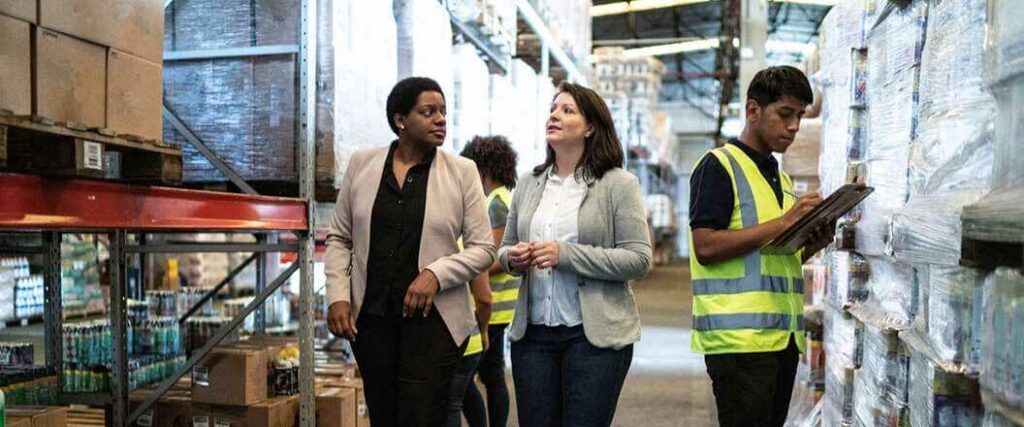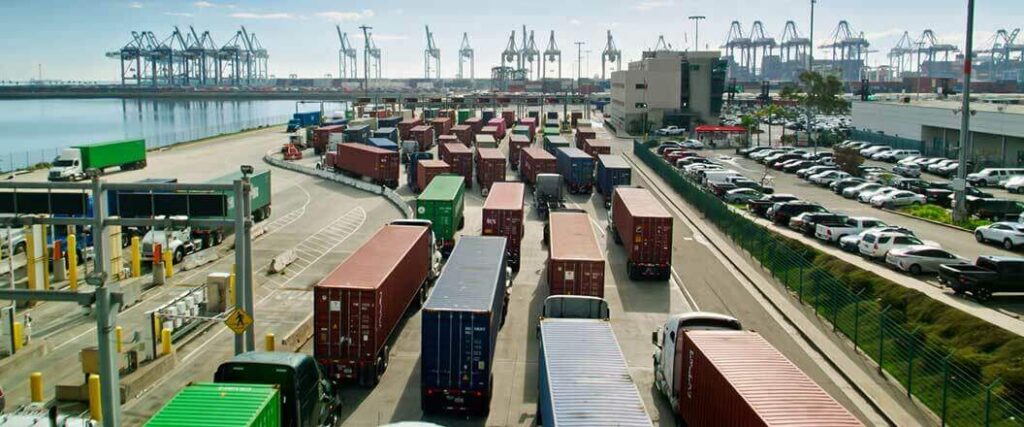ICS2 requirements are relatively new considerations for exporters across the world. This advanced cargo information system is designed to increase security and streamline the European Union's import process. It requires exporters to submit comprehensive data for all goods entering the EU prior to shipment. Meeting these requirements can pose challenges, especially for those unfamiliar with the protocols involved.
As mandated by the European Commission, ICS2 requirements call for all goods entering the EU to be registered via the Entry Summary Declaration, with detailed cargo information including the Harmonized System code and EORI number. This ensures enhanced security and streamlined customs processes.
Are you an exporter concerned with meeting ICS2 requirements? If so, read on as we review what ICS2 is and what it means for exporters based in the USA.

The European Union's Import Control System 2 (ICS2) is a comprehensive customs security program. Designed to tighten up pre-arrival security of import transactions taking place in the EU, Norway, and Switzerland, ICS2 is a significant update to the customs process.
The ICS2 can be categorized as a Pre-Loading Advanced Cargo Information (PLACI) system. Essentially, it lets customs officials scrutinize transactions and cargo manifests before they're loaded for shipment. As a pre-loading and pre-arrival system, it improves security and shortens processing times.
The system has been in place for express air shipments and postal services since 2021. As of March 1, 2023, it also applies to all general air cargo. By March 2024, ICS2 requirements will apply to shipments made by land and sea as well.
Before laying out what these requirements look like, there are a few other terms we should review. This is a government-mandated system, after all, so there's no shortage of exciting new acronyms to learn.
The Entry Summary Declaration (ENS) is a mandatory filing that gives EU customs authorities pre-arrival information about goods entering the union. Its purpose is to assess risks to security and safety, ensuring that all imports comply with EU regulations. Proper ENS filing is at the core of ICS2 requirements.
By gathering detailed information about cargo before its arrival, customs can more effectively manage potential threats and streamline the import process.
Economic operators (EOs) are entities or individuals involved in sending goods to the EU. This includes manufacturers, exporters, and carriers. EOs need to provide accurate information in a timely manner on the ENS for their shipments.
This includes details such as:
If you export goods to the EU, you'll be designated as an economic operator. As such, you’ll also need to register for an EORI number.
An Economic Operator Registration and Identification (EORI) number is a unique identifier for economic operators trading with the EU. It's used in all customs procedures and is essential for tracking and registering customs information within the EU.
Getting an EORI number is a fairly straightforward process.
Once obtained, this number should be used in all dealings with EU customs.
The Customs Risk Management Framework (CRMF) is a strategic approach used by customs authorities worldwide to identify, assess, and mitigate risks associated with the movement of goods across international borders. This framework is meant to augment the security of international trade while making legitimate trade faster and less complicated.
You can think of ICS2 as an element of a CRMF. It's concerned with identifying and assessing potential risks from shipments entering the EU.
Mistakes or omissions in any of the requirements we’ve just listed could severely delay any shipments sent into the EU and other nations using the ICS2 standards. Professional guidance is highly recommended to avoid such delays and the penalty fees associated.

Now that we’ve reviewed these key terms, we’re ready to examine ICS2 requirements. These requirements should be noted by any exporters who plan to send cargo of any kind into or through the EU. It’s also worth mentioning that requirements may vary depending on what kind of cargo you plan to ship.
The general requirements for meeting ICS2 requirements are as follows.
Remember, these requirements must be met for any and all air shipments going to or through the EU, Norway, or Switzerland as of this writing. If you’re reading this article after March 2024, it also applies to maritime and land shipments.
The trade relationship between the U.S. and EU has been mutually beneficial for many years. In the following table, you can see how potentially lucrative it is for exporters to tap into this market.
| Types of Goods Exported | Trade Value in USD |
| Aerospace parts and products | $35.7 billion |
| Mineral fuels | $28.9 billion |
| Machinery | $26.4 billion |
Source: investopedia.com
For export businesses in the United States, understanding and following ICS2 guidelines is crucial to maintaining this trade relationship.
This system impacts how goods are shipped to the EU, so exporters need to have a thorough grasp of the necessary documentation and procedures. ICS2's emphasis on security and efficient customs processes means that exporters must be more diligent in their preparations and submissions.
If these requirements aren’t met, the shipment will be delayed or rejected at the border. To avoid these issues, let's take a look at what an ICS2-compliant transaction might look like.

To illustrate what ICS2 compliance looks like in practice, consider the following scenario.
A U.S.-based company, "TechGadgets Inc.," plans to export electronic devices to the EU. Here's how they would comply with ICS2 requirements:
By following these steps and understanding each aspect of the process, TechGadgets Inc. successfully meets ICS2 requirements.
The transaction processes smoothly with minimal delays. This example highlights how important preparation, accuracy, and communication are in meeting ICS2 requirements.
For exporters based in the United States, keeping up with the changing landscape of EU regulations is a vital aspect of doing business the right way. It’s not always an easy task, but you don’t have to go it alone.
At Cargo Export USA, we offer expert assistance with all facets of the export process. We have the knowledge, experience, and resources you need to ensure compliance with any number of export regulations.
Our services also include:
Don’t let ever-changing regulations slow your business down. Call our expert team at (866) 301-0635 or connect with us online. We’re ready to put our years of experience to work for you and your export business.